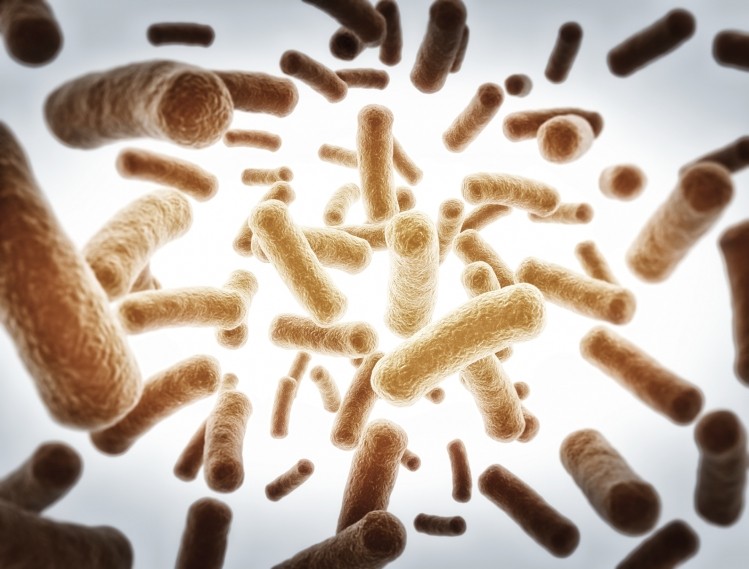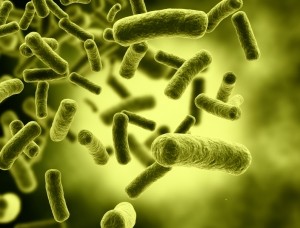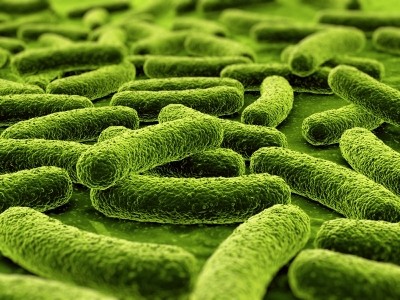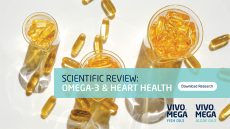Navigating health conundrums: Nutrients, probiotics and nutrient-microbiome interactions

What is needed is perspective. In this article I hope to encourage an assessment that is more detailed than a simple consideration of what is the profile of the resident gut flora but to draw attention to an examination of the outcomes associated with how nutrients and gut flora interact.
A prime example that was avidly picked up by the mass media and caused societal angst was the proposed link between eating red meat and heightened risk for cardiovascular disease (1). The central problem was the conversion of a bacterial product TMA to TMAO in the liver, the latter being a substance that is pro-atherosclerotic. TMA (trimethylamine) can be sourced from red meat, but can also arise from unrelated dietary origins. What was lost in the media coverage was that vegetarians for the most part had similar levels of TMA despite consuming no red meat at all. Clearly there is more to this than simply what is in your diet. Given that TMAO levels plummet after antibiotics are used to wipe out gut flora, it seems that the wrong bacteria converting dietary sources to TMA were critical drivers for cardiovascular disease based on TMAO. Yet the solution that was proposed was to eliminate meat from the diet as opposed to manage your flora for specific nutrient-microbiome interactions.
This simplistic assignment of blame to a nutrient or a bacteria but not their interactions, was again highlighted by a publication in Lancet (2) where the incidence of a devastating neonatal disorder, Necrotizing Enterocolitis (NEC), was not reduced by treatment with a specific, single strain probiotic (Bifidobacterium breve BBG-001). The conclusion of this large study, that NEC risk was unaffected by probiotics (in general) was in stark contrast to the numerous previous studies that demonstrated a significant reduction in the incidence of NEC and its complications like sepsis with probiotics (3,4).
So what do you do? How does this relate to the general application of probiotics for gastrointestinal health? The sound bite world we live in encourages superficial conclusions but sage advice arises from the wisdom that is associated with a deeper perspective. In other words, if you dig deeper one may have a very different conclusion and action items. The purpose of this article is to help one navigate through some of these issues and provide perspective for seemingly contrasting conclusions and directives, particularly as it relates to our most vulnerable, premature infants.
Before we discuss the specifics of NEC and the elements that make this a dominant cause of death and morbidity in premature infants let me make the point with a recounting of a humorous example of nutrient-microbiome interactions. The setting is a mango plantation in the Malaysian peninsula. I was driving from Kuala Lumpur to Singapore to attend the World Itch Conference. That conference was indeed the most difficult I have ever had to sit through. If you can imagine managing the heat and humidity of equatorial Singapore while listening to days and days of presentations where every fifth word was either scratch or itch …. well it gets into your head, and causes a self-assessment of the quality of your underwear.
Invited by colleagues I stayed at a spiritual retreat and mango plantation about half way down the spine of the Malaysian peninsula. The spiritual retreat was a large temple that encouraged meditation and introspection on your own terms, but oddly in the background a “boom box” was playing “The wind beneath my wings” by Bette Midler. Not exactly what I was expecting.
But back to the nutrient part of this story - mangoes. I personally consider a fully ripe mango as one the finest foods known to man. Ripe to the point where chewing is optional, they simply slide down your throat in a soothing, tasty slice of joy. My colleagues brought me a plate of sliced mangoes shaped into a mini-mountain and I was in heaven. Pure delight, and I consumed it with glee and gusto. After demolishing that plate, which must have been about 8 mangoes, I was offered another plate. I dutifully agreed. Another little volcano of mango delight appeared and in act of pure gluttony I consumed it. Each sliver of golden mango brought sensual delights. I was in nirvana. So now I am down about 16 mangoes.
If that was not bad enough I was offered another plate and in a moment of utter weakness I agreed. The locals were a little set back but it was a large plantation and it was not as if I was denting their supply chain. So another plate of 8 mangoes was consumed. Total is now 24 mangoes.
Now we approach the essence of this story and that is that even though a food is good for you, too much of it may not be. It may be obvious to you that eating 24 mangoes in a single setting is way too much fiber, a fact that was lost to me at the time as I was in culinary heaven. However, some hours later and continuing all through the night and the next day I was reminded on how our intestinal flora avidly digests fiber. The bloating, cramps, diarrhea, flatulence and discomfort were debilitating.
So what was happening here? I had good gut flora, I took probiotics, I was eating healthy food that was rich in fiber so why was I in so much discomfort? Well the answer remains obvious, the blame resided with neither the nutrient nor the bacteria per se, but the symptoms reflect the amount of that nutrient and its utilization by gut bacteria - there was no balance in the dynamics of the nutrient-bacterial interaction. The point is even if you have a healthy profile of gut flora excessive nutrients that are microbe-specific, like fiber, can cause intense gastrointestinal distress. Would I have been able to solve this problem if I had taken more probiotics? No it would not because the products of fiber digestion and fermentation even from health-driving bacteria would still cause distress as I so admirably demonstrated to myself. I am sure that everyone has similar experiences, if less dramatic, where consumption of a fiber-rich food in excess has resulted in discomfort the next day.

So is the correct conclusion to never eat mangoes? Obviously no (although I may have thought that at the time), the answer is to balance consumption and not deliver nutrients in excess. This is a critical element as it relates to NEC in premature babies (vide infra), the topic that initiated this discussion.
So if it is not the nutrient then is the problem the gut flora? After all they are responsible for digesting the fiber? Well that role is critical for our health, and not just gut health, but our general health. They not only allow us to access food that is hard to digest but they influence immunity and create chemicals that help regulate how we turn on/off our genes, a mechanism called epigenetics that is linked to cancer chemoprevention. So we need our microbial friends. In my situation the problem was not the wrong flora or flora per se, they were simply reacting to the nutrients delivered to them.
How does this scenario relate to the failure of the recent clinical trial in NEC where supplementation with a specific probiotic did not result in a reduction of the incidence of NEC? To connect the dots we need to explore what is happening in NEC and why is it so devastating. Firstly, it is a disease of premature babies and a leading source of morbidity and mortality. When I first started researching NEC back in the mid-80’s the current dogma was clearly wrong. The ideology at the time was that it gut necrosis was caused by ischemia to the gut due to the birth process. There were numerous problems with this concept. Firstly, the mean onset of the disease was 3 weeks after birth. Ischemic injury occurs within minutes and hours and does not wait nearly a month to be evident. The chemistry of free radical production associated with ischemia-reperfusion injury precludes a delay of that magnitude.
Another critical aspect relates to a diagnostic feature of NEC, which is the presence of bowel wall gas; these are gases arising from fermentation and accumulating within the wall of the intestine. This characteristic cannot be created by ischemia but it does point to excessive fermentation of nutrients by enteric flora. Our research efforts noted that an excess of short chain organic acids like lactic acid, were present in the bowel lumen to the point that the pH dropped to 3. That is as acidic as the stomach and the intestine does not have adequate defenses for that level of acidity.
We proposed that excessive fermentation of nutrients by gut flora were central to the gut necrosis in these susceptible premature infants and went on to model it and describe therapeutic options (5-7). Other components are the premature intestinal function – limited digestion, leakiness of the barrier function and importantly poor motility. A mature gut usually responds to distress with increased motility but premature babies are limited in this defense. If the gut contents cannot be moved along easily then there is an even greater chance for pH to drop to levels that cause tissue necrosis (5).
It is also important to remember that these babies are in intensive care, and exposed to antibiotics and antibiotic resistant bacteria. Getting your flora from an intensive care unit is nowhere near as ideal as obtaining it from your mother. Further a gene that facilitates resistance to antibiotics, beta-lactamase is next to the gene beta- galactosidase, which facilitates rapid fermentation of disaccharides by gut flora. In other words these premature babies are exposed to an environment that promotes rapid fermentation of nutrients by gut flora as well as antibiotic resistant bacteria. So supplementing them with probiotics may well provide them with a healthier profile of gut bacteria to help them adjust to life outside the womb.
The recent publication by Costeloe et al. and its conflicting evidence that a probiotic failed to reduce the incidence of NEC (2) has raised some concern that this may not be an effective therapeutic approach. When studies show conflicting results (2-4) what is required is a deeper evaluation, although the more common approach is to just go with the latest science.
One aspect to consider is the location of gut necrosis in NEC, and with NEC is that the primary site of damage is in the small intestine, primarily the ileum, which is at the end of the small intestine where it joins the large intestine. The Bifidobacterium breve BGG-001 strain used in the Lancet study primarily prefers to reside in the large intestine. So it may be possible that this single bacterial strain used was not the best choice for this problem based on a location disconnect. The probiotic lives in the large intestine and the disease occurs in the small intestine. Related to this the other strains that have shown positive benefits in reducing the incidence of NEC are members of the Lactobacilli family and these prefer to reside in the small intestine. So location may be a critical determinant and that this should always be factored into the interpretation of research studies.
So outcomes, good or bad, may be influenced by the bacteria involved but their location is critical. Another critical consideration is to define the nature of the interactions between supplied nutrients and their opportunistic use by gut flora. In premature infants their survival is dependent on growth and maturation and therefore, nutrition. The problem lies in that the gut is immature and struggles to match the efficiency of the placenta. Physicians, appreciating that it is important to supply adequate nutrition accelerate the supply of nutrients to these premature infants via naso-gastrointestinal tube feeding.
It is this scenario it is easily possible for the nutrient supply to exceed the infant gut’s capacity to digest and absorb nutrients, leaving the nutrients available for bacterial fermentation in isolated segments of gut that could lead to localized damage. This brings us back to my mango madness where there was an adverse response to an excess of good nutrients by normal flora. My mango-distressed gut managed the problem by moving it along and out via diarrhea, but in premature infants this defense is not developed. When premature infants are exposed to an excess of good nutrients, which may then be used by enteric bacteria – healthy or fast fermenting antibiotic resistance strains - a scenario leading to localized gut necrosis, sepsis and death is a strong possibility.
In summary, NEC is clearly not a disease of birth ischemia and occurs almost exclusively in fed infants. Probiotics that reside in the small intestine appear to reduce the incidence of NEC, but a strain that resides in the large intestine does not. So preferred site of residence appears to be important, but there is more to consider for these premature infants. Their gut is immature and vulnerable, and does not have all of the defenses of a mature gut. For these reasons the call to action we made over 25 years ago to manage nutrient-bacteria interactions through a careful delivery of nutrients so as to not overwhelm the digestive capacity may further help in reducing the incidence of this deadly disease.
Assessing how a probiotic strain affects a health outcome will be confusing and simplistic unless one accounts for the nature of nutrient-microbiome interactions and the scenarios that influence these interactions e.g., rate of nutrient supply, gut motility, capacity of the intestine to digest the nutrients, and whether the probiotics adequately cover the entire intestinal tract.
Bibliography
1. Miller MJ. J Am College of Nutrition 2013; 32:2, 75-78
2. Costeloe K. et al. Lancet 2015; S0140-6736.
3. Zhou P et al., Nutrients 2015, 7, 7256-7270
4. Aceti A et al. Italian J Pediatrics 2015; 41:89
5. Clark DA and Miller MJ. J Pediatrics 1990, 117: S64 – S67
6. Miller MJ et al. Am J Physiol. 1988; 255: G556-65.
7. Miller MJ et al. Dig Dis Sci. 1990 Oct; 35(10): 1257-64.
About the author: Dr Mark Miller is a unique, innovative and entrepreneurial scientist with a life-long history of innovation and success. His three decades of experience as a medical school Professor and elite biomedical researcher, is balanced by an enviable track record of product innovation, marketing breakthroughs, business development and a detailed awareness of regulations and quality control. This unique blend of skills, experience and global perspective provides a sage perspective on scientific and medical advances.


















